There are over 43,000 species of spiders on this planet…YUCK, YUCK, YUCK! It is a sad reality to those who can’t stand spiders or have a bit of arachnophobia, but it’s true. Luckily, not many are poisonous spiders.
Only a small number of the spider population is poisonous, and less than 30 have caused human deaths.
A spiders venom is designed to work on small prey, however some is so potent that it can kill a human. Often times, when a human is bit by a deadly spider…their skin has a severe reaction which leads to infection…which in turn, leads to death.
Here are nine of the deadliest spiders and where you can find them! If you want to find them.
1. Brown Recluse Spider
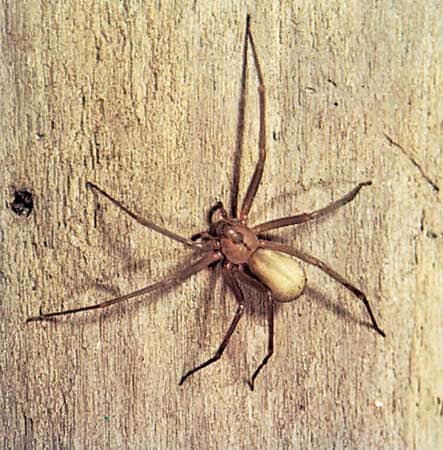
John Gerad/EB Inc.
The brown recluse spider is one of the most dangerous spiders in the United States.
Its venom destroys the walls of blood vessels near the site of the bite, sometimes causing a large skin ulcer.
Most of the population live in the Western and Southern portions of America…however…the spider has been known to frequent the Northeast as well.
2. Brazilian Wandering
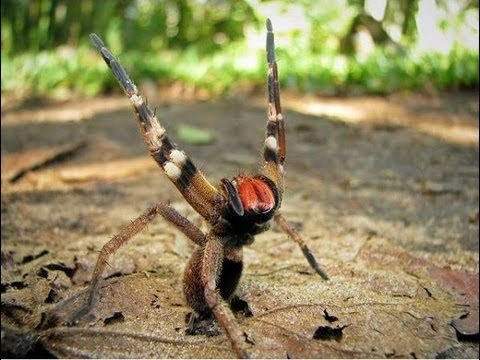
These species are sometimes also referred to as banana spiders because they are frequently found on banana leaves. They have an aggressive defense posture, in which they raise their front legs straight up into the air.
They are poisonous to humans, and they are considered to be the deadliest of all the world’s spiders. Their venom is toxic to the nervous system, causing symptoms such as salivation, irregular heartbeat, and prolonged, painful erections (priapism) in men.
They are mostly found in tropical parts of the earth and are a plentiful in Brazil.
3. Yellow Sac Spider
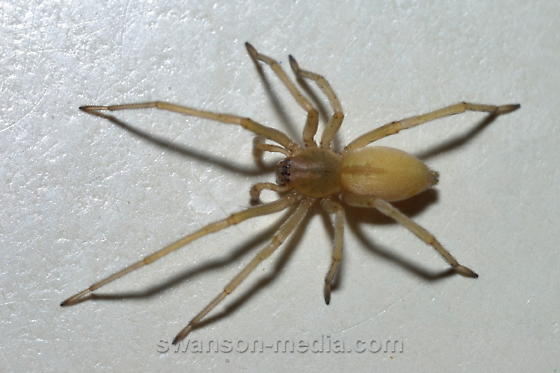
Yellow sac spiders build silken tubes under stones, in leaves, or in grass. They are found throughout the United States, as well as in Mexico southward through South America, is venomous to humans and is often found indoors.
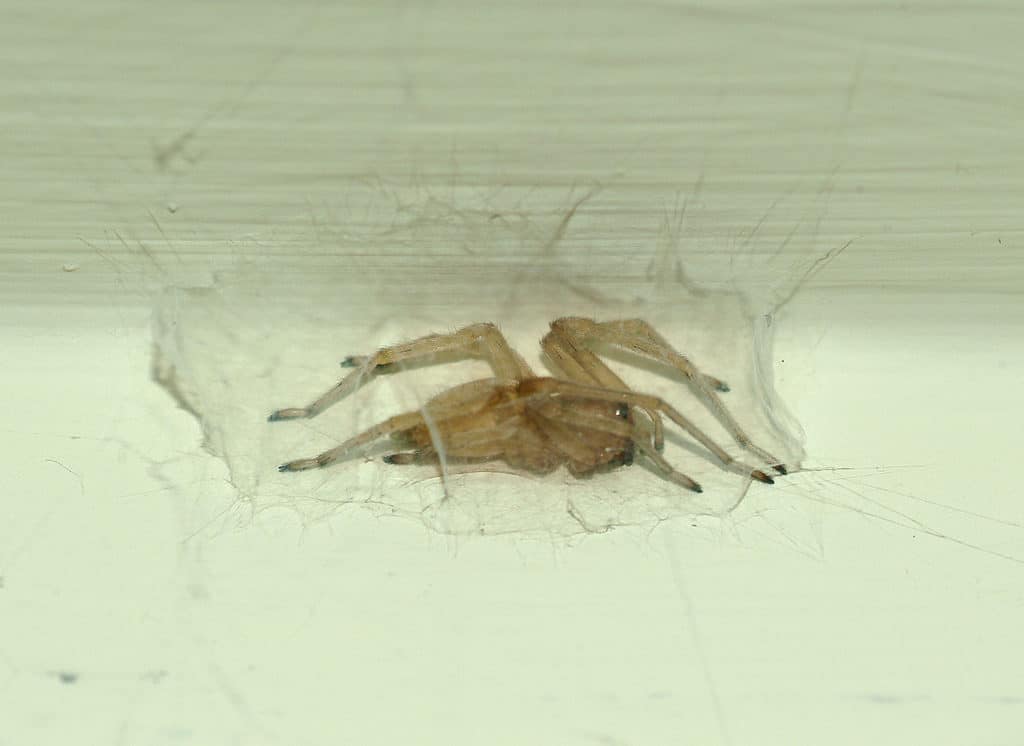
The spider’s venom is a cytotoxin (a substance that destroys a cell or impairs its function) that can produce necrotizing lesions, but such lesions occur rarely in bite victims. Still, redness and swelling at the site of the bite are common reactions.
Yellow sac spiders are not docile creatures; a female yellow sac spider, for example may bite when defending her eggs.
4. Wolf Spider
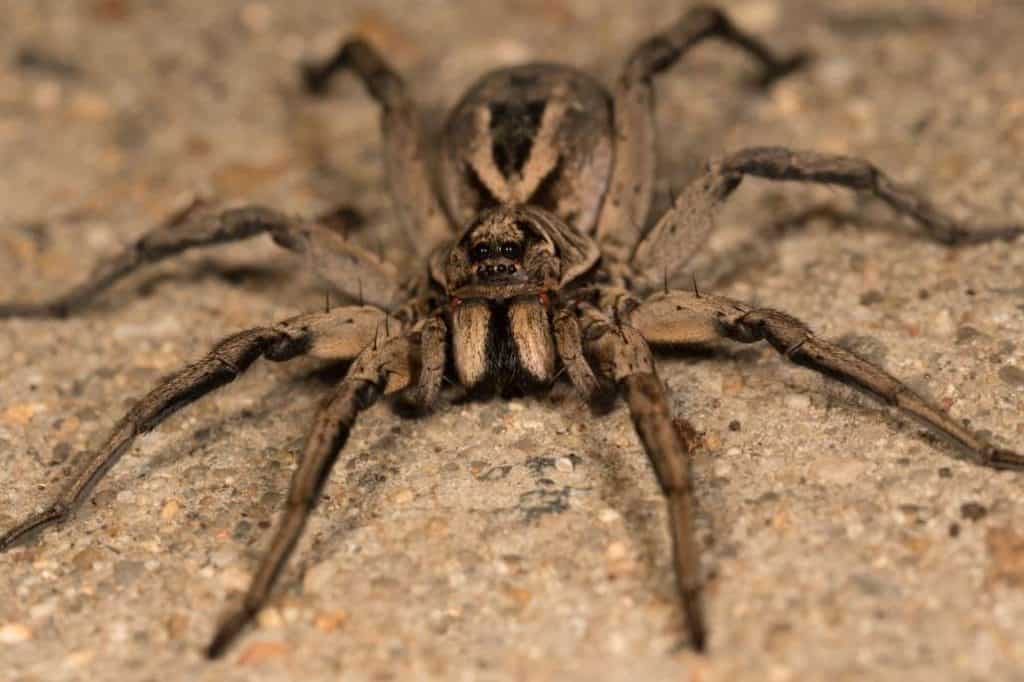
Wolf spiders are found throughout the world. They are named for their wolf like habit of chasing and pouncing upon prey. About 125 species occur in North America, whereas there are about 50 in Europe.
Wolf spiders are venomous, but their bites are not considered dangerous. (Some bite victims who are allergic to spider bites in general may become nauseous, dizzy, and develop an elevated heart rate, however.).
The spider’s large fangs cause physical trauma at the site of the bite. The bite itself has been described as similar to that of a bee sting, and the venom the spider injects may cause itchiness at the site. This painful bite, coupled with their speed and startling appearance, can be unsettling, and some bite victims panic from the experience.
5. Black Widow Spider
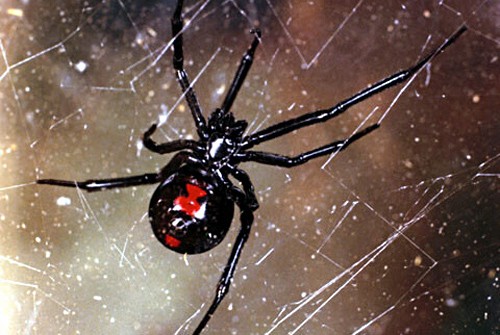
The black widow is responsible for more than 2,500 visits to poison control centers every year in the U.S. It is one species that can be found from the United States and parts of Canada through Latin America and the West Indies.
Most Black Widow’s are found in the western and southern parts of the United States.
The male, seldom seen because it is often killed and eaten by the female after mating (hence the spider’s name), is about one-fourth the size of the female. In addition to the hourglass design, the male often has pairs of red and white stripes on the sides of the abdomen.
Its bite, which may feel like a pinprick on the skin, often produces severe muscle pain and cramping, nausea, and mild paralysis of the diaphragm, which makes breathing difficult. Most victims recover without serious complications. Although the bite is thought to be fatal to very small children and the elderly, no deaths have been attributed to bites by widow spiders in the United States.
6. Red Widow Spider
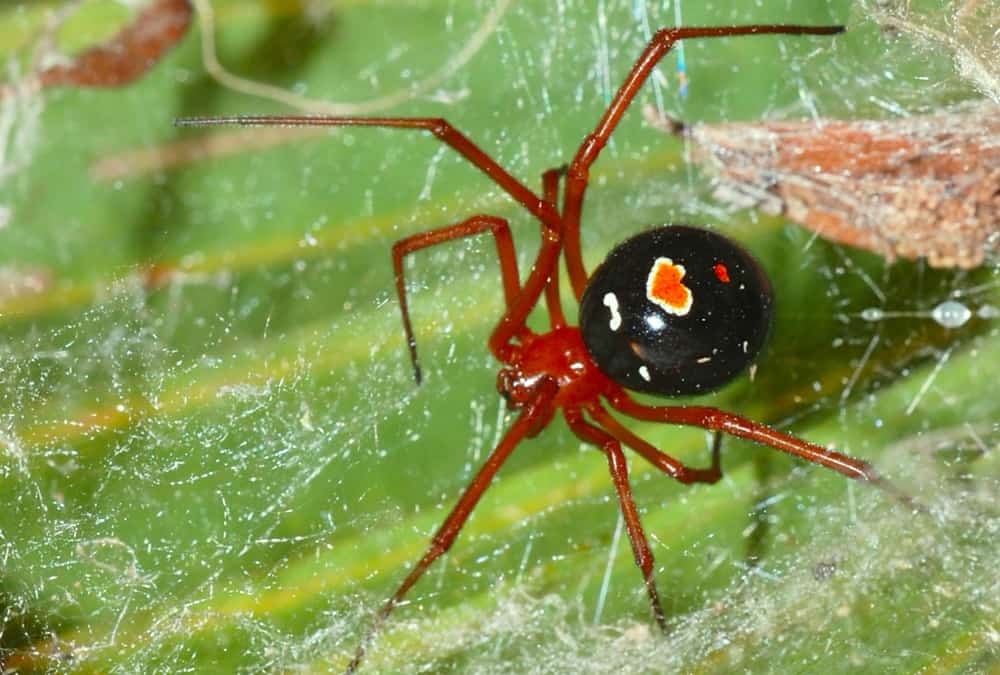
The spider’s appearance is distinguished from other widow spiders by its reddish cephalothorax and legs and its reddish-brown to black colored abdomen. Many red widows have a red mark on the underside of the abdomen, which may be either hourglass-shaped, triangle-shaped, or indistinct. The top of the abdomen is spotted red or orange, with each spot surrounded by a yellow or white outline.
Currently, red widow spiders inhabit palmetto-dominated scrublands in central and southern Florida; however, some experts believe that this range may be expanding.
The bite of the red widow is similar to that of the black widow, and identical symptoms (pain, cramping, nausea, etc.) typically result. Likewise, death from a red widow bite is rare, since the spider injects such a small amount of venom. Very young children, the elderly, and people with health problems are most vulnerable to red widow spider bites.
7. Brown Widow Spider

Brown widow populations have appeared in southern California, the Caribbean, the U.S. states of the Gulf Coast, as well as in Japan, South Africa and Madagascar, Australia, and Cyprus.
Brown widow venom is considered to be twice as powerful as that of the black widow; however, the species is not aggressive and only injects a tiny amount of venom when it bites. Still, brown widow bites were associated with the deaths of two people in Madagascar in the early 1990’s. (These victims they were in poor health and they were not treated with antivenin.)
Like ✪ Share ✪ Be Awesome






